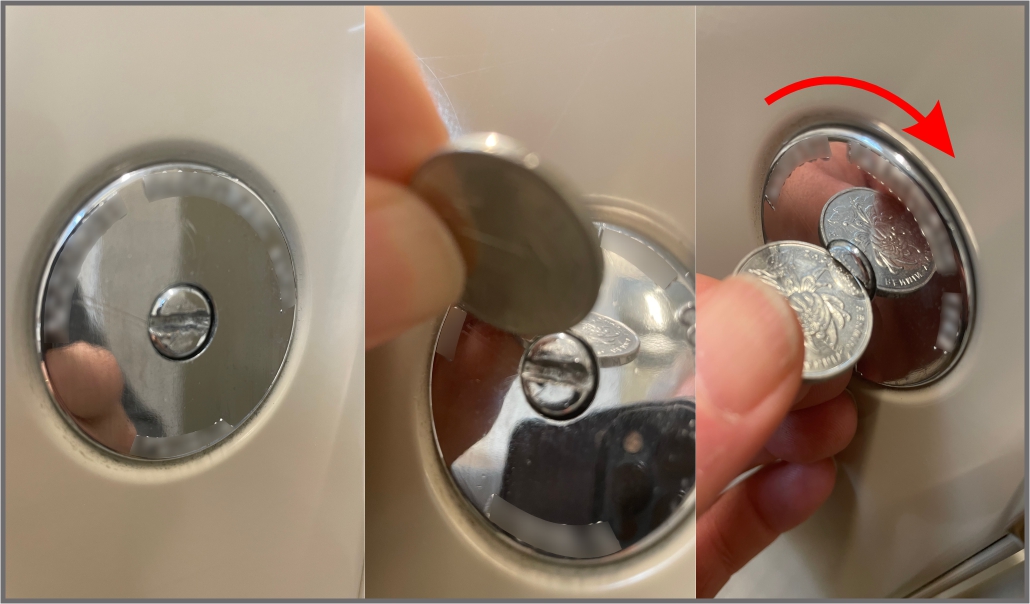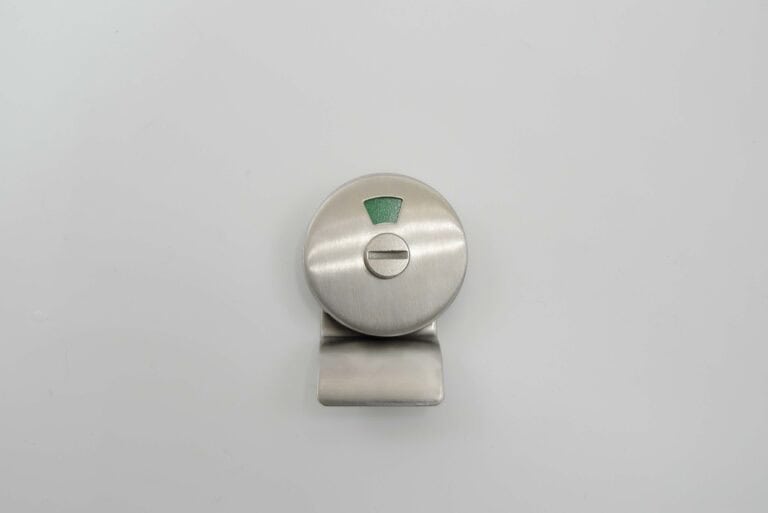Why Use Emergency Access Latches
The popularity of emergency access latches on commercial toilet partitions appears to be growing. Although it may or may not be required by local or national code requirements in your area, the ability for building owners, maintenance crews, and first responders to have easier access to a locked public bathroom door is desirable.
Some of the most obvious benefits beyond comfort and safety for this feature include assisting occupants experiencing medical emergencies, the person using the restroom accidentally locking themselves in, and removing a commercial restroom stall from service by having the ability to lock it from the outside.
Emergency access latches can be broken down into two common categories – through door and surface mounted latches.
Understanding Through Door Latches on a Bathroom Stall Door
Through door latches are one of the best options for emergency occupant egress. Comprised typically of stainless steel, this latch will only require two pieces of hardware, meaning fewer materials during installation. This type of latch works by drilling a hole through the door and assembling the two parts. The outside part is usually a circular disk with a slot in it above the door handle. The inside part typically has a slide or twist feature, that allows the stall user to engage the lock by either sliding or twisting the mechanism, respectively.
In case of an emergency, the exit door can be opened by inserting a coin or a flat tool such as a screwdriver into the slot found on the exterior of the door and twisting it until it unlocks.
The benefit of a through door latch is that it does not require coordination with existing hardware. It is also generally straightforward and not difficult to use so many public restroom facilities choose this style for their restroom needs.

Understanding Surface Door Latches on a Restroom Stall
The second common door latch is more complicated than the through latch. It is made up of three different parts, which require coordination to work properly. The parts are the latch, the keeper, and the hinge.
When access is needed, this type of hardware allows the door to be physically lifted over the keeper attached to the pilaster, enabling access to the stall.
The most common reasons for failure are non-compatible features and misalignment of the three key pieces of hardware. The top incompatible hardware failure is the keeper being a closed capture type rather than open capture type. A closed capture type negates the ability for the latch to disengage the keeper and does not allow access to the stall.

The top misalignment issue is the latch and keeper not being properly aligned to allow the hardware to clear the top of the keeper when lifted. The hinge must also allow sufficient lift for the latch to clear the keeper.
Another reason for failure is due to the latch needing to swing away from the keeper unobstructed. This may cause the surface door latch to not be compatible with all toilet partition styles. Despite these issues, the major advantage of using a surface mount latch for accessibility is that it requires no tools for safe door opening, just lift the door and push.
Whether or not you prefer surface or through latches on your bathroom partitions, if proper care is taken during the specification and installation process, both are equally effective. Ironwood recommends the through latch type as it is the simplest method to implement without worry of hardware coordination. If you have questions, or would like to know more about ADA compliance, and privacy and safety concerns when choosing your latch type we have a Toilet Partition Expert standing by – contact us here.
